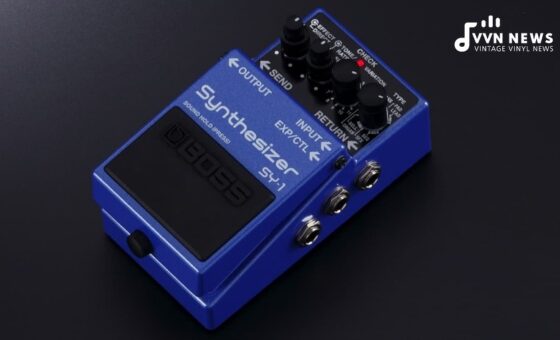When I picked up my first guitar, an old six-string that had seen better days, the question at the forefront of my mind was: How long does it take to develop calloused guitar fingers?
The strings felt like sandpaper against my soft hands, and I wondered how many hours I would need to endure this discomfort before my fingertips turned hard as a rock.
Beginning a journey with a new instrument can be an overwhelming experience replete with questions and uncertainties.
It’s also quite a physical challenge. You’ll find your fingers cramping up from unfamiliar chords, your wrists twisting into strange angles, and, most notably, your fingertips developing callouses from constantly pressing against the harsh steel strings.
It’s an essential part of becoming a proficient guitarist, but how long does it take? Grab your picks, and let’s find out.
What are Guitar Calluses?
When speaking of guitar calluses, we’re not referring to any medical condition but rather a natural, protective response from the body.
As you practice and play your guitar, you’ll notice the tips of your fingers become more rigid and thicker.
These calluses are areas of skin that have hardened and thickened over time due to continuous exposure to friction or pressure.
These changes might sound alarming initially, but rest assured, they’re both normal and necessary.
These small patches of hardened skin help protect your fingers from the rigors of playing the guitar strings. Hence, developing guitar calluses is a right of passage for every guitarist.
Also Read: How To Build Guitar Calluses? 2025 [How To Avoid Finger Pain?]
Importance of Guitar Callouses

The importance of these often-unspoken guitar calluses cannot be overstated. As a guitarist, they can indeed become your best friends.
Calluses protect your fingertips from pain and blisters and enhance your ability to play the instrument effectively.
- Improved Comfort: The prime advantage of having callused fingertips is the increased comfort level while playing. An adept guitarist without callouses may struggle to play for extended periods due to finger pain.
- Better Guitar Grip: Another benefit of guitar calluses is that they provide an improved grip on the strings. A better grip allows a more polished strumming and plucking action, directly translating into better sound production.
- More excellent Playing Sustain: One thing many new guitarists notice once their fingers are fully ‘acclimatized’ is that they can hold their notes longer and produce more clear, sustaining pitches. This is because smoother fingertips slide easily, allowing for more accurate and simultaneous string contact.
Developing guitar calluses allows you to play your instrument with less physical effort while achieving superior musical results.
Your fingers will have grown accustomed to the rigid steel strings, leading to fewer mistakes and smoother performances.
How Long Does it Take to Develop Calloused Guitar Fingers?
Depending on the individual, the initial phase of creating calluses may take a couple of days to several weeks.
This is not a definitive timeline; differences could be due to the frequency and intensity of your practice sessions or even personal physiological attributes.
If you consistently practice for about 20-30 minutes daily, you might notice your fingertips getting tougher within one to two weeks.
Remember that calluses don’t form overnight — they are a product of repeated pressure and friction over time.
There’s also an in-between stage where the fingertips on your fingering hand feel sore, especially after more extended practice periods.
It’s important not to rush through this phase and give your fingers the rest they need. Over-practicing can lead to blisters, which might slow down your callus-forming progress.
To get through this discomfort, we recommend gradually increasing the duration of your practice sessions. You can start with 10 minutes in the first week and add 5 minutes every subsequent week until you can comfortably play for 40-45 minutes.
Moreover, practicing in a humidity-controlled setting helps keep your fingers from drying out too much – a common pitfall that leads to skin cracks and delays callus build-up.
Steps to Develop Calloused Guitar Fingers

Mastering the guitar not only requires dedication and practice, but it also involves conditioning your fingers to handle its unforgiving strings.
Below are some essential steps that I followed to develop my calloused guitar fingers.
Proper Finger Positioning and Technique
The first step in developing calluses is learning how to position your fingers on the guitar safely and efficiently.
It’s important not to press down too hard or cause unnecessary stress on your fingertips.
Ensure you press just behind the frets instead of in the middle when playing.
This position enables you to use less force for the same sound quality, reducing the impact on your finger pads.
Give special attention to relaxing your hands; too many new players cramp their hands up in an effort “not to make a mistake.”
This will hinder your progress and potentially harm your fingertips further.
Gradual Increase in Practice Time
A common mistake many beginners make is trying to form calluses quickly by practicing for long periods without giving their fingers time to rest.
Instead, it’s more beneficial to start with short practice periods and gradually increase over time.
Start with just 15 minutes daily, gradually increasing this to an hour or more as your fingertips become accustomed.
Repeated exposure over time will help develop those essential calluses better than one or two extended play periods.
Finger Exercises
Consider introducing specific finger exercises into your practice routine to hasten the development of finger strength and calluses.
- One-Finger Exercise: A practical exercise is simply taking one finger at a time and repeatedly pressing down on a string.
- Four-Finger Exercise: Once you’ve built some initial toughness, try using all four fingers simultaneously, alternating pressure from index to pinky while maintaining good hand posture.
Remember that while these exercises can aid, you want to make sure any discomfort you are experiencing is not pain.
As with any other physical activity, you must listen to your body and avoid pushing too hard.
Seeking Guidance From an Experienced Guitarist or Teacher
Although trial and error can yield results, seeking guidance from a seasoned guitarist or teacher is beneficial.
They can provide personalized advice on how to position your fingers properly, time your practice sessions, execute practical exercises, and handle common challenges beginners face.
Practice the right balance between being persistent and caring for your skin. Rotate between playing frequently and resting enough for your skin to recover and form calluses.
Remember that developing calloused fingers is a process that varies for different people.
Also Read: Guitar Pedal Order 2025 [Signal Chain & Effects Loop Guide]
Common Challenges Faced to Build Guitar Calluses
Developing guitar calluses, though essential, isn’t always a bed of roses.
Every guitarist, from beginners to seasoned professionals, encounters unique challenges along the way.
Pain and Discomfort
Initially, playing without calluses can be pretty painful. The tips of your fingers aren’t accustomed to the intense pressure and friction of gripping guitar strings. Calluses can sting or give an uncomfortable burning sensation as they begin to form.
Time Commitment
It’s crucial to realize that calluses won’t develop in a day or after a few hours of practice. It’s a gradual process that requires consistent effort and enduring some level of discomfort.
Blisters
One possible pitfall on the journey to developing calluses is forming blisters instead. If you push yourself too hard too soon, your skin may respond by creating blisters, which can further delay the formation of the desired callouses.
Maintenance
Even once you’ve achieved your rock-hard guitar fingers, maintaining those calluses can be tricky, especially if you take a break from playing.
Regular conditioning is vital. Otherwise, these hard-won protective layers could soften up or peel off entirely — putting you back at square one.
Getting through these challenges can test your patience and commitment, but remember — it’s all part of becoming an accomplished guitarist!
Your fingers might feel like they’re made of steel at times, but as with anything worth achieving, it does take time and perseverance.
So when you’re feeling down or questioning why you chose such a demanding hobby, have faith in the process and remember: every strum brings you one step closer to your goal – mastering this incredible instrument!
Tips for Developing Calluses

Playing the guitar is a mix of art and endurance. And if you want to up your game, developing those thick calluses on your fingertips is crucial.
It might seem a bit strange (and even painful at first), but trust me, this process will ultimately help you play better and with ease.
Apply Rubbing Alcohol
To expedite the toughening process of your fingertips, consider using rubbing alcohol._ Rubbing alcohol_ can help dry up your softer exposed skin tissues and accelerate callus formation.
Just dab a bit on a cotton ball and gently apply it over your fingertips before and after each practice session. This technique not only helps harden the skin faster but also provides relief from mild irritation.
Use Other Items
Want to form those guitar calluses even when you’re away from your instrument? You can substitute limited guitar practice time using other items with rough surfaces like a tennis ball or stress ball.
Regular pushing or squeezing on such objects can simulate the pressure from guitar strings, aiding in the hardening process.
Bend, Bend, Bend
When we say “bend,” we’re talking about bending each string as much as possible while playing the guitar.
The more repetitive motion on your fingertips, the quicker you’ll form calluses. The bending technique is especially effective when trying high-pitched notes that require extra force – a double win for calluses development!
Play the Acoustic Guitar
Playing an acoustic guitar can significantly accelerate the formation of finger calluses compared to an electric one due to thicker strings requiring more significant fingertip pressure.
Make sure to play an acoustic guitar if you usually lean towards its electric counterpart.
Use Heavier Gauge Strings
If I were looking to form guitar calluses faster, I’d choose to work with heavier gauge strings.
Thicker and heavier gauge strings require harder pressing, improving the rate at which calluses are formed.
However, remember that heavier yarns might be a bit bulkier for beginners, so gradually increasing the string gauge over time is wise.
Healthy callus development is about gradual progression. Do not rush or push yourself too hard.
Keep the process steady and patient to prevent skin damage or unnecessary pain. And most importantly, take joy in this journey of becoming more proficient with your guitar.
Also Read: Guitar Strings Guide 2025 [How To Choose Guitar Strings]
FAQs About Guitar Calluses
Is developing calluses necessary for playing the guitar?
Yes, developing calluses on your fingertips is necessary for playing the guitar. These hardened areas reduce discomfort and allow you to play the strings more effectively.
How can I speed up my finger callus development when learning to play guitar?
Increase your playing time gradually, ensure proper finger positioning, use finger strengthening exercises, and consider guidance from a mentor. Sometimes, cycling between electric and heavier gauge acoustic strings can also help.
Does everyone get calluses from playing the guitar?
Almost everyone who plays the guitar will develop some level of calluses. However, the extent varies depending on your practice habits and skin type.
Are there any side effects or risks associated with guitar calluses?
Guitar calluses are a normal response of your skin to constant friction and pressure. They protect your fingers while you play and do not pose any health risks.
Can I still play the guitar if my fingertips are sensitive and don’t quickly form calluses?
Yes, you can still play the guitar even if your fingers are sensitive; they might take a bit longer to adapt. With regular practice, your fingers will develop the needed tolerance over time.
Conclusion
Patience is indeed a virtue in guitar playing. You can expect to have calloused guitar fingers within 2-4 weeks with consistent practice.
However, every individual is different, and your journey may take less or more time. Proper technique, using the right gear, and taking care of your hands will make the process smoother and healthier.
Remember, calluses are not earned overnight but rather through the beautiful journey of learning, exploring, and persevering with your guitar! So keep strumming, keep enjoying, and let the music play on!








